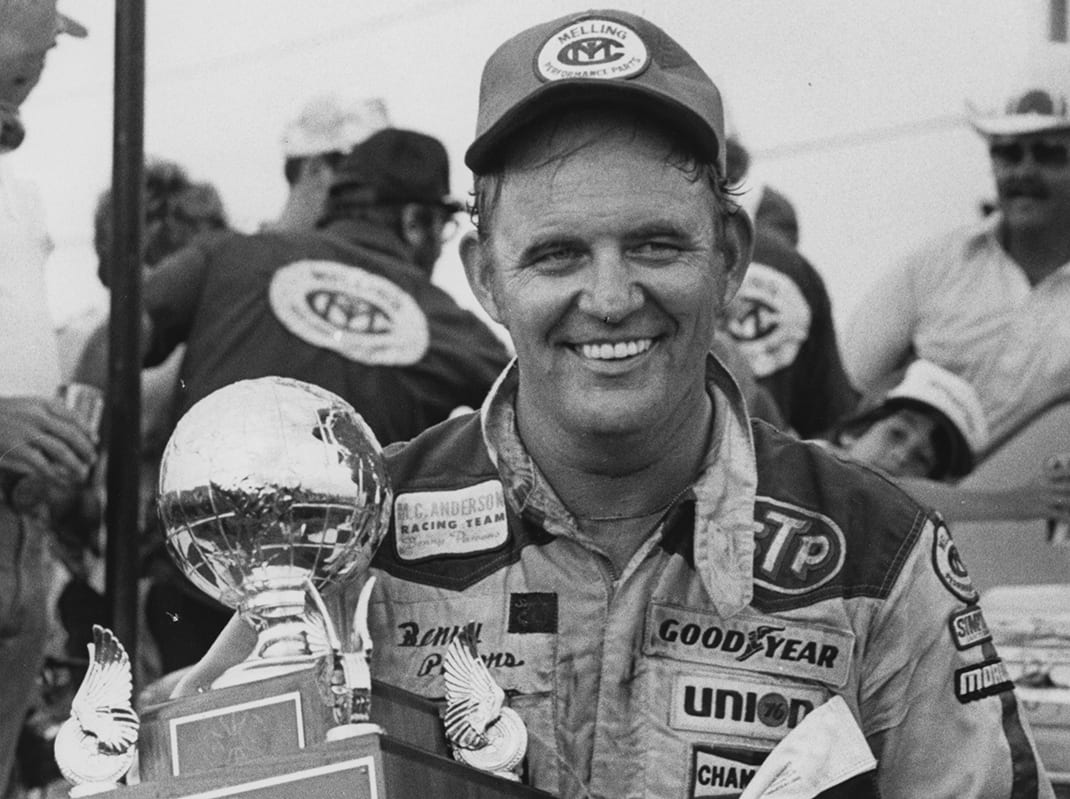This story originally appeared in the May 2015 issue of SPEED SPORT Magazine.
NASCAR’s 600-mile race at Charlotte Motor Speedway has been a highlight of the schedule since June 19, 1960, the day Tennessee’s Joe Lee Johnson won the inaugural race on the new 1.5-mile track.
Many other exciting 600-mile races made headlines over the next two decades, such as David Pearson’s win on three tires for team owner Ray Fox in 1961, Petty Enterprises driver Jim Paschal’s victory over teammate Richard Petty in 1964 and Buddy Baker’s win by 24 seconds over Bobby Allison in 1972.
Prior to the start of the 20th World 600 on May 28, 1980, Darrell Waltrip, then 33 and driving the No. 88 DiGard Racing Chevrolet, was looking to become the first driver to win three consecutive 600s. NASCAR’s newest star was only six years into his Sprint Cup (then Winston Cup) career and at times fueled debates through his outspoken, brash personality.
Opposites seem to attract and that was the case with Waltrip’s closest rival during the 400-lap rain-soaked event that took nearly seven hours to complete.
Benny Parsons, then 38 and driving the No. 27 M.C. Anderson Racing Chevrolet, was known for his quiet, unassuming demeanor. Parsons had enjoyed his own success, being crowned the 1973 Winston Cup champion and claiming the 1975 Daytona 500 while driving Chevrolets for L.G. Dewitt.
The extreme North Carolina late-spring heat often tested the drivers as patience and physical endurance were required to record a 600-mile victory at Charlotte Motor Speedway. Mechanical failures were also an issue and that was on display in 1980 when blown engines and crashes caused 14 caution periods over 113 laps. They sent Allison, Dale Earnhardt, Tommy Houston, Bill Elswick, Dave Marcis and Bill Elliott, among others, to the garage early.
The favorites — Pearson, Petty, Cale Yarborough and Neil Bonnett — filled the top-10 spots, but were laps down. That left Parsons and Waltrip as the class of the field, setting up an incredible duel that began on lap 302. The crowd of 120,000 began to stand and cheer wildly as an incredible finish was in the making.
The green flag spanned an amazing 98 laps following the second of two lengthy delays caused by rain. Waltrip got the lead on lap 303 and held it for 74 laps.
Parsons’ crew chief, David Ifft, felt his driver was getting good tire wear when he had him stop for fuel only on lap 361. Waltrip stopped two laps later and held a one-second lead over Parsons.
The duel got more intense when Parsons made his most aggressive move on lap 375. He passed Waltrip in the fourth turn and held the lead until lap 388. Then, the lead changed hands four more times over the next 12 laps. Waltrip led from laps 389 to 392, Parsons passed him again to lead laps 393 and 394 before Waltrip got it back from laps 395 to 398. Parsons took control on lap 399 and held off Waltrip, who led a race-high 157 laps, by a half-car length.
The prestigious triumph snapped a 12-race winless streak for Parsons, who won the 1979 season finale at Ontario (Calif.) Motor Speedway. Terry Labonte, Petty and Bonnett completed the top five.
Understandably, Parsons was very tired, both mentally and physically, when he addressed media members in Charlotte’s press box as darkness covered the speedway.
“It was thrilling to be part of a race that good,” Parsons said that day, his comments published in the May 29, 1980, issue of Grand National Scene. “Today, second place would have been hard to take. We needed a victory badly. It might be hard to understand how depressing it is to come so close and still not win. Now we can start thinking about things other than victory.
“Darrell was awfully tough (and) the cars were even at the finish. It was a matter of whoever got the edge. There wasn’t much strategy or deciding when you’d make the move. It was pass me if you can and if you get by me, try to stay in front.”
Click below to continue reading.
